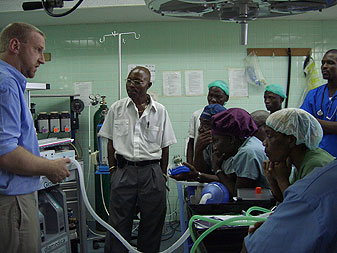News
February 6th, 2018
LIBERIA has been beset with disasters for decades – and in many forms. A place Diamedica’s director, Robert Neighbour, has worked for nearly ten years, the word Liberia translates as "land of the free" in Latin.
Historically, freedoms of many kinds have been hard fought for in Liberia, but Diamedica has endeavoured to make a positive difference in terms of healthcare facilities there.
Background
Torn apart politically and socially following a government coup in 1980 which triggered a civil war, Liberia was later struck by a deadly Ebola epidemic, with a state of emergency declared as recently as 2014.
It was the largest outbreak of Ebola, or hemorrhagic fever, in history, with 28,639 suspected, probable, and confirmed cases in 2014, and 11,316 deaths from the disease in total.
Aside from the devastating impact on the general population, according to the CDC (Centers for Disease Control and Prevention), Liberia also lost 8% of its doctors, nurses, and midwives to Ebola, with healthcare workers tending to sufferers of the condition being particularly vulnerable.
The impact of such huge professional losses is difficult to imagine, but as a result there were, in addition, setbacks in the treatment and control of HIV, tuberculosis, and malaria, with an estimated 10,600 additional lives lost to these conditions during the epidemic.
As if these statistics aren’t overwhelming enough, they need to be weighed up against what was already a weak health system, and a lack of human and infrastructural resources in the region.

Impact on hospitals
Diamedica first visited Phebe hospital in Gbarnga Bong County in 2007, and most recently again this summer.
Phebe, like many hospitals across Africa, faces challenges with its electricity supply plus a scarcity of compressed oxygen – both impacting on surgical procedures.
It’s why the company’s Gloastavent® anaesthesia system is ideal for use here, as it was specifically designed to function safely during a power failure, and also creates its own compressed oxygen from air in the room.
Robert said: “During the previous visits it was noted that electrical power at the hospital was particularly challenging. They have a system that provides both 110 volt and 220 volt outlets. Unfortunately most of those outlets have the same type of sockets – two flat pins and round ground pin – common to the USA. This leads to equipment being damaged if connected to the wrong output in error.”
This means that the ‘life expectancy’ of equipment can be considerably reduced and at the extremes, simply will not function.

Practicalities of use
The other Glostavent®, installed at Phebe in 2013, was in general use during the Ebola epidemic and had received regular dosing and spraying with concentrated bleach. Despite this, apart from a couple of tubes that had deteriorated due to the bleach, it also functioned well. The UPS still held its battery back-up charge, the ventilator functioned correctly, and the concentrator output was more than 90%.
Robert said: “The regular heavy bleaching had caused considerable surface pitting to both the vaporiser and ventilator weights and this was cleaned to some degree. The surface discoloration remains, but does not affect the functioning of the equipment.”
Ultimately Robert found it encouraging to see first-hand that equipment which had weathered so many years, and so many challenging conditions was still functioning well, and aiding the important objective of saving lives.
While this is hugely satisfying for the Diamedica team to know, it’s also worth noting that this story demonstrates the manufacturer’s wholehearted, hands-on commitment to the after sales care of its customers.
